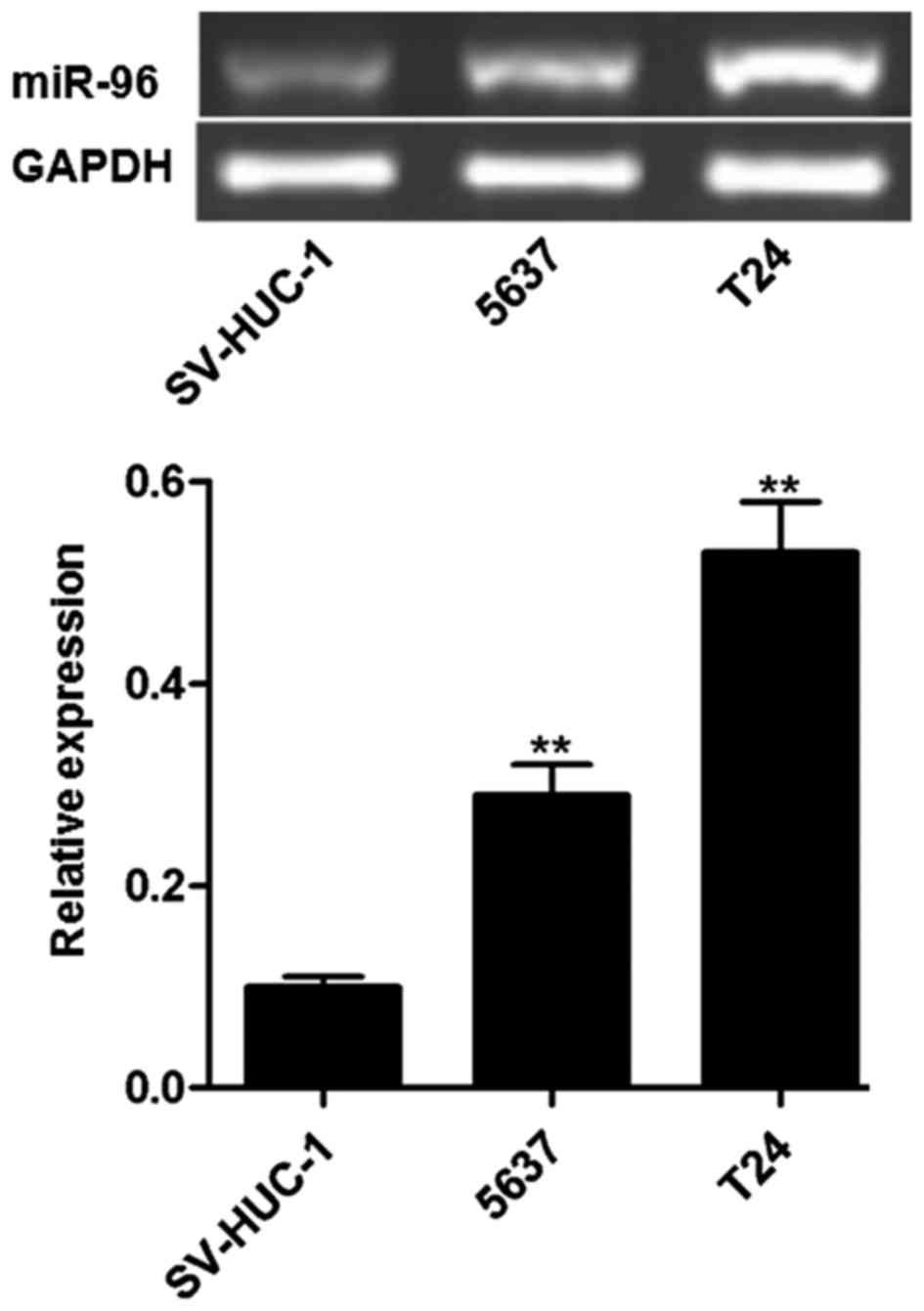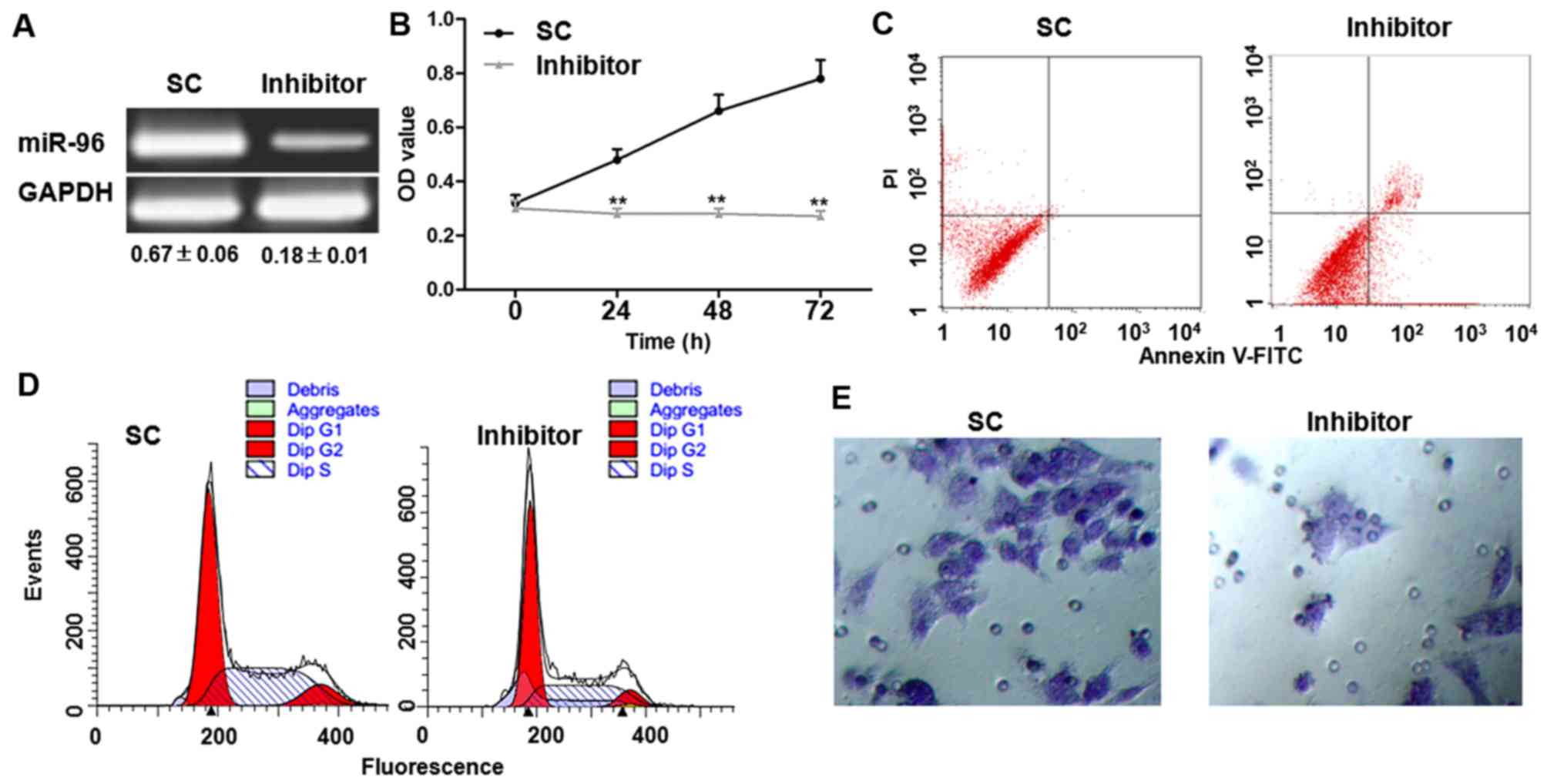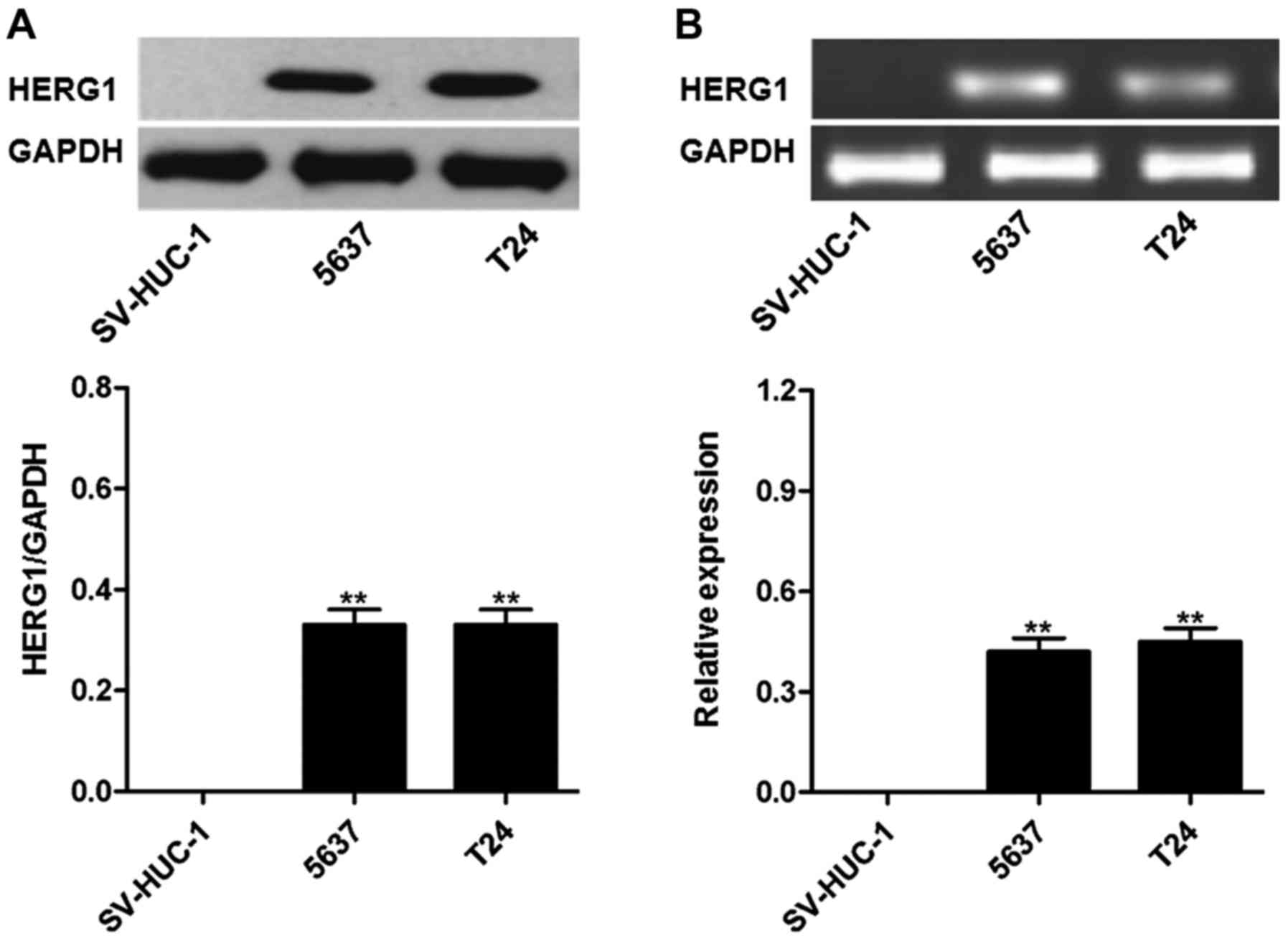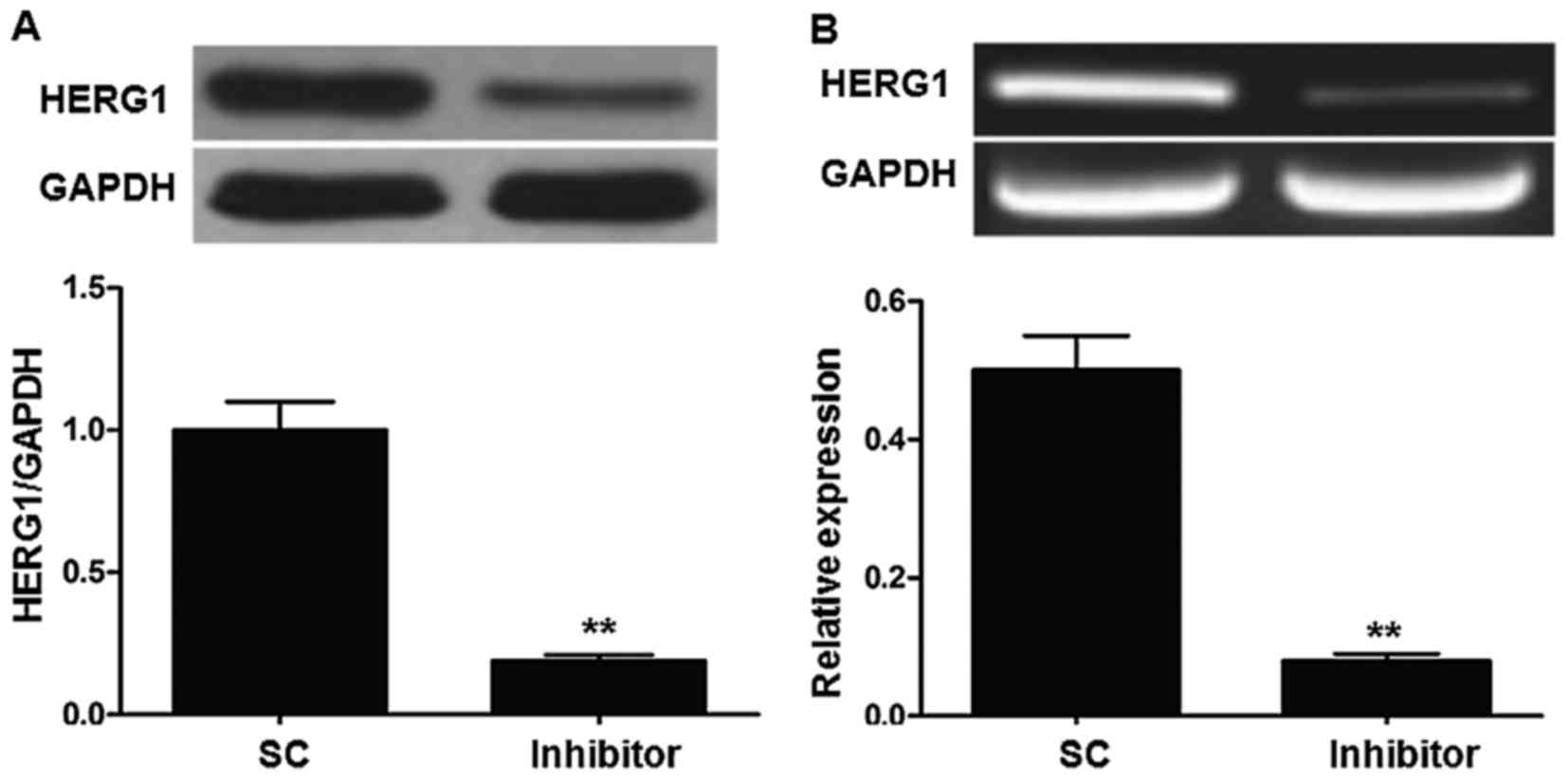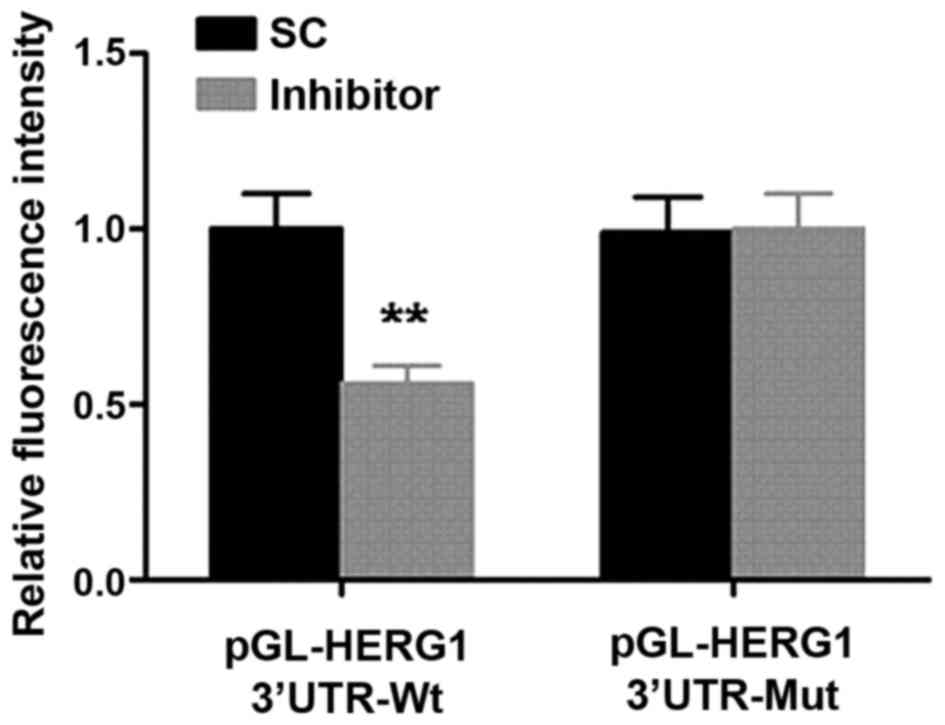|
1
|
Gan X, Lin X, He R, Lin X, Wang H, Yan L,
Zhou H, Qin H and Chen G: Prognostic and clinicopathological
significance of downregulated p16 expression in patients with
bladder cancer: A systematic review and meta-analysis. Dis Markers.
2016:52596022016. View Article : Google Scholar : PubMed/NCBI
|
|
2
|
Yin M, Joshi M, Meijer RP, Glantz M,
Holder S, Harvey HA, Kaag M, Fransen van de Putte EE, Horenblas S
and Drabick JJ: Neoadjuvant chemotherapy for muscle-invasive
bladder cancer: A systematic review and two-step meta-analysis.
Oncologist. 21:708–715. 2016. View Article : Google Scholar : PubMed/NCBI
|
|
3
|
Cauberg Evelyne CC, de la Rosette JJ and
de Reijke TM: Emerging optical techniques in advanced cystoscopy
for bladder cancer diagnosis: A review of the current literature.
Indian J Urol. 27:245–251. 2011. View Article : Google Scholar : PubMed/NCBI
|
|
4
|
Fahmy N, Lazo-Langner A, Iansavichene AE
and Pautler SE: Effect of anticoagulants and antiplatelet agents on
the efficacy of intravesical BCG treatment of bladder cancer: A
systematic review. Can Urol Assoc J. 7:E740–E749. 2013. View Article : Google Scholar : PubMed/NCBI
|
|
5
|
Mizuguchi Y, Takizawa T, Yoshida H and
Uchida E: Dysregulated miRNA in progression of hepatocellular
carcinoma: A systematic review. Hepatol Res. 46:391–406. 2016.
View Article : Google Scholar : PubMed/NCBI
|
|
6
|
Wang QX, Zhu YQ, Zhang H and Xiao J:
Altered MiRNA expression in gastric cancer: A systematic review and
meta-analysis. Cell Physiol Biochem. 35:933–944. 2015. View Article : Google Scholar : PubMed/NCBI
|
|
7
|
Gambari R, Brognara E, Spandidos DA and
Fabbri E: Targeting oncomiRNAs and mimicking tumor suppressor
miRNAs: Nuew trends in the development of miRNA therapeutic
strategies in oncology (Review). Int J Oncol. 49:5–32. 2016.
View Article : Google Scholar : PubMed/NCBI
|
|
8
|
Srivastava K and Srivastava A:
Comprehensive review of genetic association studies and
meta-analyses on miRNA polymorphisms and cancer risk. PLoS One.
7:e509662012. View Article : Google Scholar : PubMed/NCBI
|
|
9
|
Han Y, Chen J, Zhao X, Liang C, Wang Y,
Sun L, Jiang Z, Zhang Z, Yang R, Chen J, et al: MicroRNA expression
signatures of bladder cancer revealed by deep sequencing. PLoS One.
6:e182862011. View Article : Google Scholar : PubMed/NCBI
|
|
10
|
Wu Z, Liu K, Wang Y, Xu Z, Meng J and Gu
S: Upregulation of microRNA-96 and its oncogenic functions by
targeting CDKN1A in bladder cancer. Cancer Cell Int. 15:1072015.
View Article : Google Scholar : PubMed/NCBI
|
|
11
|
Kriebel S, Schmidt D, Holdenrieder S,
Goltz D, Kristiansen G, Moritz R, Fisang C, Müller SC and Ellinger
J: Analysis of tissue and serum microRNA expression in patients
with upper urinary tract urothelial cancer. PLoS One.
10:e01172842015. View Article : Google Scholar : PubMed/NCBI
|
|
12
|
Scheffer AR, Holdenrieder S, Kristiansen
G, von Ruecker A, Müller SC and Ellinger J: Circulating microRNAs
in serum: Novel biomarkers for patients with bladder cancer? World
J Urol. 32:353–358. 2014. View Article : Google Scholar : PubMed/NCBI
|
|
13
|
Yoshino H, Seki N, Itesako T, Chiyomaru T,
Nakagawa M and Enokida H: Aberrant expression of microRNAs in
bladder cancer. Nat Rev Urol. 10:396–404. 2013. View Article : Google Scholar : PubMed/NCBI
|
|
14
|
Yamada Y, Enokida H, Kojima S, Kawakami K,
Chiyomaru T, Tatarano S, Yoshino H, Kawahara K, Nishiyama K, Seki N
and Nakagawa M: MiR-96 and miR-183 detection in urine serve as
potential tumor markers of urothelial carcinoma: Correlation with
stage and grade, and comparison with urinary cytology. Cancer Sci.
102:522–529. 2011. View Article : Google Scholar : PubMed/NCBI
|
|
15
|
Zhu G, Wang X, Wu S and Li Q: Involvement
of activation of PI3K/Akt pathway in the protective effects of
puerarin against MPP+-induced human neuroblastoma
SH-SY5Y cell death. Neurochem Int. 60:400–408. 2012. View Article : Google Scholar : PubMed/NCBI
|
|
16
|
Lv Q, Xue Y, Li G, Zou L, Zhang X, Ying M,
Wang S, Guo L, Gao Y, Li G, et al: Beneficial effects of evodiamine
on P2X(4)-mediated inflammatory injury of human umbilical vein
endothelial cells due to high glucose. Int Immunopharmacol.
28:1044–1049. 2015. View Article : Google Scholar : PubMed/NCBI
|
|
17
|
Dijkstra S, Mulders PF and Schalken JA:
Clinical use of novel urine and blood based prostate cancer
biomarkers: A review. Clin Biochem. 47:889–896. 2014. View Article : Google Scholar : PubMed/NCBI
|
|
18
|
Kaboli PJ, Rahmat A, Ismail P and Ling KH:
MicroRNA-based therapy and breast cancer: A comprehensive review of
novel therapeutic strategies from diagnosis to treatment. Pharmacol
Res. 97:104–121. 2015. View Article : Google Scholar : PubMed/NCBI
|
|
19
|
Guo H, Li Q, Li W, Zheng T, Zhao S and Liu
Z: MiR-96 downregulates RECK to promote growth and motility of
non-small cell lung cancer cells. Mol Cell Biochem. 390:155–160.
2014. View Article : Google Scholar : PubMed/NCBI
|
|
20
|
Li Z and Wang Y: MiR-96 targets SOX6 and
promotes proliferation, migration and invasion of hepatocellular
carcinoma. Biochem Cell Biol. Sep 11–2017.(Epub ahead of print).
View Article : Google Scholar
|
|
21
|
Xu L, Zhong J, Guo B, Zhu Q, Liang H, Wen
N, Yun W and Zhang L: miR-96 promotes the growth of prostate
carcinoma cells by suppressing MTSS1. Tumour Biol. 37:12023–12032.
2016. View Article : Google Scholar : PubMed/NCBI
|
|
22
|
Cao LL, Xie JW, Lin Y, Zheng CH, Li P,
Wang JB, Lin JX, Lu J, Chen QY and Huang CM: miR-183 inhibits
invasion of gastric cancer by targeting Ezrin. Int J Clin Exp
Pathol. 7:5582–5594. 2014.PubMed/NCBI
|
|
23
|
Xia H, Chen S, Chen K, Huang H and Ma H:
MiR-96 promotes proliferation and chemo- or radioresistance by
down-regulating RECK in esophageal cancer. Biomed Pharmacother.
68:951–958. 2014. View Article : Google Scholar : PubMed/NCBI
|
|
24
|
Hong Y, Liang H, Uzair-Ur-Rehman, Wang Y,
Zhang W, Zhou Y, Chen S, Yu M, Cui S, Liu M, et al: miR-96 promotes
cell proliferation, migration and invasion by targeting PTPN9 in
breast cancer. Sci Rep. 6:374212016. View Article : Google Scholar : PubMed/NCBI
|
|
25
|
Ma Y, Liang AJ, Fan YP, Huang YR, Zhao XM,
Sun Y and Chen XF: Dysregulation and functional roles of
miR-183-96-182 cluster in cancer cell proliferation, invasion and
metastasis. Oncotarget. 7:42805–42825. 2016.PubMed/NCBI
|
|
26
|
Eissa S, Matboli M, Essawy NO and Kotb YM:
Integrative functional genetic-epigenetic approach for selecting
genes as urine biomarkers for bladder cancer diagnosis. Tumour
Biol. 36:9545–9552. 2015. View Article : Google Scholar : PubMed/NCBI
|
|
27
|
Li C, Du X, Tai S, Zhong X, Wang Z, Hu Z,
Zhang L, Kang P, Ji D, Jiang X, et al: GPC1 regulated by miR-96-5p,
rather than miR-182-5p, in inhibition of pancreatic carcinoma cell
proliferation. Int J Mol Sci. 15:6314–6327. 2014. View Article : Google Scholar : PubMed/NCBI
|
|
28
|
Lowe SW and Lin AW: Apoptosis in cancer.
Carcinogenesis. 21:485–495. 2000. View Article : Google Scholar : PubMed/NCBI
|
|
29
|
Croce CM and Reed JC: Finally, an
apoptosis-targeting therapeutic for cancer. Cancer Res.
76:5914–5920. 2016. View Article : Google Scholar : PubMed/NCBI
|
|
30
|
Yu N, Fu S, Liu Y, Xu Z, Liu Y, Hao J,
Wang B and Zhang A: miR-96 suppresses renal cell carcinoma invasion
via downregulation of Ezrin expression. J Exp Clin Cancer Res.
34:1072015. View Article : Google Scholar : PubMed/NCBI
|
|
31
|
He FZ, McLeod HL and Zhang W: Current
pharmacogenomic studies on hERG potassium channels. Trends Mol Med.
19:227–238. 2013. View Article : Google Scholar : PubMed/NCBI
|
|
32
|
Sanguinetti MC: HERG1 channel agonists and
cardiac arrhythmia. Curr Opin Pharmacol. 15:22–27. 2014. View Article : Google Scholar : PubMed/NCBI
|
|
33
|
Litan A and Langhans SA: Cancer as a
channelopathy: Ion channels and pumps in tumor development and
progression. Front Cell Neurosci. 9:862015. View Article : Google Scholar : PubMed/NCBI
|
|
34
|
Warmke JW and Ganetzky B: A family of
potassium channel genes related to eag in Drosophila and mammals.
Proc Natl Acad Sci USA. 91:pp. 3438–3442. 1994; View Article : Google Scholar : PubMed/NCBI
|
|
35
|
Lastraioli E, Lottini T, Bencini L,
Bernini M and Arcangeli A: hERG1 potassium channels: Novel
biomarkers in human solid cancers. Biomed Res Int. 2015:8964322015.
View Article : Google Scholar : PubMed/NCBI
|
|
36
|
Lastraioli E, Perrone G, Sette A, Fiore A,
Crociani O, Manoli S, D'Amico M, Masselli M, Iorio J, Callea M, et
al: hERG1 channels drive tumour malignancy and may serve as
prognostic factor in pancreatic ductal adenocarcinoma. Br J Cancer.
112:1076–1087. 2015. View Article : Google Scholar : PubMed/NCBI
|
|
37
|
Pillozzi S and Arcangeli A: Physical and
functional interaction between integrins and hERG1 channels in
cancer cells. Adv Exp Med Biol. 674:55–67. 2010. View Article : Google Scholar : PubMed/NCBI
|
|
38
|
Zeng W, Liu Q, Chen Z, Wu X, Zhong Y and
Wu J: Silencing of hERG1 gene inhibits proliferation and invasion,
and induces apoptosis in human osteosarcoma cells by targeting the
NF-κB pathway. J Cancer. 7:746–757. 2016. View Article : Google Scholar : PubMed/NCBI
|
|
39
|
Feng J, Yu J, Pan X, Li Z, Chen Z, Zhang
W, Wang B, Yang L, Xu H, Zhang G and Xu Z: HERG1 functions as an
oncogene in pancreatic cancer and is downregulated by miR-96.
Oncotarget. 5:5832–5844. 2014. View Article : Google Scholar : PubMed/NCBI
|



